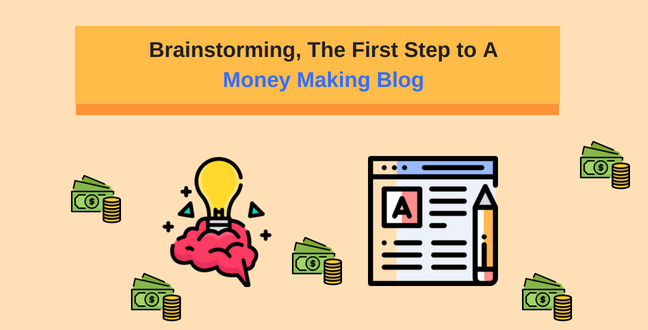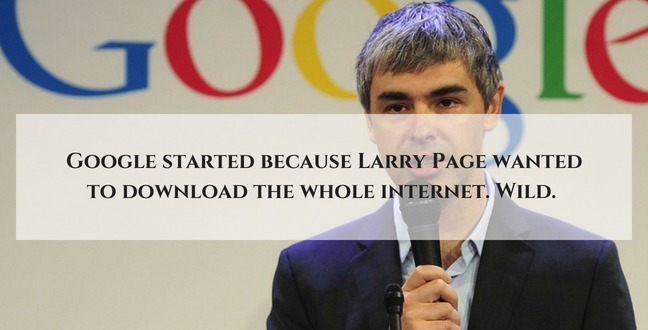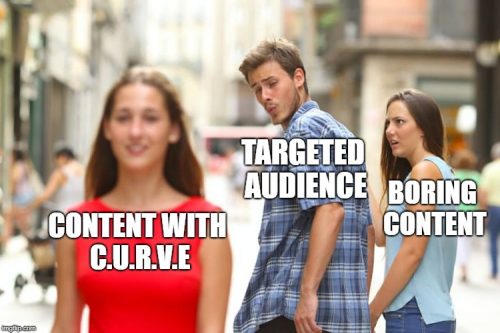Steph W. from SEOPressor


...help you check your website and tell you exactly how to rank higher?


95
score %
SEO Score

Found us from search engine?
We rank high, you can too.
SEOPressor helps you to optimize your on-page SEO for higher & improved search ranking.
By jiathong on July 13, 2018

Content creation sounds like a magical mantra that can give you views, exposure, leads, conversion, money, success and all that jazz.
Don’t you just want a part of it?
The money’s at where people’s at, right?
So how can you start a blog and start on content marketing and earn some money?
The thing is before you get your hands on any content, you need to generate some ideas.
That’s where brainstorming comes in.
The term was introduced by Alex Faickney Osborn in his 1953 brainstorm book called Applied Imagination.
It is essentially a group activity. Where people get together to discuss and debate to generate ideas.
Sometimes it could be used to solve a problem or to understand something better. But in our case, we just want ideas to create some good content.
Let’s pull up the Ws and Hs so we can understand how to pull this off.

You can start with two and the number can go up to ten. When the group has more than 5 people though, break them up into smaller groups.
The point is,
you want people from diverse point of views or positions so you can get a complete picture from the whole spectrum. People doing sales and doing marketing has different insights. And you want those differences.
But you don’t want too many people. If there’s someone who’s not talking, you know you need to cut the numbers down.
Brainstorming session is where everyone talks AND listen, anyone who’s doing only one of those is not who you want.
What if I’m the only one wanting to start this blog thing? Well, more steps will be discussed below, so sit back and read on.
As much as you can.
The brainstorming session is not where you scrutinize an idea for 10 minutes then decide to drop it.
You want to go wild, get creative and just try to pump out as many ideas as you can. There’s no brainstorming rule saying you can only have 10 ideas.
Refinement and planning come after this. This is the messy big bang stage of your content creation.
Settling dust should be left to the next step.
Google started because Larry Page wanted to download the whole internet. Wild.

A lot of the time, ideas don’t fall into the bad or good idea category. It falls into the do-able and not do-able category.
How you execute it makes it good, or bad, or, you know, most of the case, meh.
You start with a seed of an idea, then expand on it and trim it as you go.
How can you know which seed is the best if you only have one to look at?
So have a note taker and take down all the ideas shared during the session. If the session happened in your head with only yourself, note it down still. Who knows when you’ll need it.
22 minutes.
The answer is the brainstorming process should be done is 22 minutes. Nicole Steinbok from Microsoft believes and advocates it.
Why not 30 minutes? Well, 30 minutes sessions leave no time for a wrapping up and casual exchange because everyone is busy rushing to their next agenda.
22 minutes is also much more flexible.
You look at the clock as quarters. You stack them up into an hour after hour of schedule you’re running after to.
You don’t need to if you end stuff on 22 minutes. You have some time left before the quarter ends, turn off working mode and make some small talks perhaps.
People don’t work nor behave in a straight line, your time doesn’t have to as well.
Brainstorming is meant to be your way of generating ideas, but 22 minutes can feel a little rushed in igniting the machine of creativity.
So go in the meeting prepared. Warm up the engine and set up your navigating system before heading into the storm.
Here are some ways to warm up and get that creative juice running for a fruitful brainstorming session.
1. Read up on news
Scan through the headlines and pick up a few that interests you. They can be used to create content that interest others too.
The Atlantic published a timely article lamenting the relationship between Thailand’s caves and local mythologies. In the wake of the drama where 12 boys and their coach trapped in a cave, the interest on Thailand caves is on an all-time high.
Brilliant, really.
2. Read books
CNET created a whole headline and article based on a couple of lines from a new book and name dropping Sergey Brin and Google.
If that’s your cup of tea, go for it and get your hands on more books.
People rarely have time to read books nowadays but content creation can really benefit from a couple of books fresh on the shelf.
3. Grab a buddy
Sometimes a little fresh insight can really get the gears running.
Don’t you feel kinda brain dead looking and reading and working on the same thing on the same field again and again?
Simply talking with someone that don’t know and don’t care about a single thing about your focus can feel like a breath of fresh air.
Clear your mind off a minute, and you can go back feeling much more stimulated.
4. Start with a word
Choose a single word and start building a map around it, think laterally.
Especially when you already have a topic or a theme, this can be an effective way to expand the idea.
Sometimes just going to the most simple and basic steps can be the best way to get started on discovering new ideas.
5. Do keyword research
If you already have a topic in mind, you can start mining for some keywords.
Valuable keywords that are currently trending, has a lot of backlinks or generates the most traffic will be something that you’d want to tap into.
In SEO it’s all about keywords, especially LSI long tail keywords that are less competitive and easier to rank.
6. Use an idea generator
If you don’t really have much time to sit down to get the gears kicking, why not get some help from the internet?
Just enter your keyword and let the website feed you a list of actionable blog titles.
The result may not be perfect, but they give you some ideas on which direction you can go.
7. Read through your notes
Do you keep a note? Or a swipe file? Or you pocket all the interesting articles you’ve read?
Why not go through them again?
Be it to look at some old project that you work on, or some silly old musings, some random thought.
Look through them and think about why they were worth noting down at that moment?
That can put you in a different mindset and help you break free from the box and be ready for some brand new ideas.
9. Look at your competitors
Especially the BIG competitors, there’s a reason that they’re so big.
They probably have a whole lot of insights and first-hand information. You don’t want to be left behind right?
So take their content as inspirations for your own, you already see how good they can do, now you can focus on brainstorming ideas on how to make it even better.
10. Think like your audience
You gotta have a targeted audience, and better yet a focused targeted persona right?
Now that you know who they are, why not try to get in their shoes and think like them?
Why would interest them, what would they want to know, what do they don’t know yet?
C.U.R.V.E method is developed by Alex Williams, Creative Director & Digital Strategy Director of Trendline Interactive to create an eye-catching subject line.
We at SEOPressor use it to make sure that every content is engaging and that every do-able ideas can be trimmed into a good idea.

Make sure that the ideas born from the brainstorming session include at least 2 of the C.U.R.V.E.
Curiosity: does the content make the recipient curious?
Urgency: does the content make the recipient want to take action?
Relevance: is the content relevant to the recipient’s situation or context?
Value: does the content reflect the recipient’s values and/or is it valuable to the recipient?
Emotion: does the content evoke emotions in the recipient? Is it funny, fascinating, surprising…?
Because content is the way to get FREE traffic!
You don’t need to spend thousands of dollars to start a business or run ads for promotion.
You only need to sign up for a free CMS (Content Management System) like WordPress, pump out some content, SEO them, and you’ll get visitors coming in.
When you have a steady flow of visitors coming in, you can start making money by selling ads or affiliate marketing.
All you need is you, maybe a team, and a brain sharp enough for writing contents.
See what the good folks at Niel Patel have to say about quality content and how they are the core of conversion a.k.a money.
Pairing up good content with SEO you’ll be raking up organic traffic.
The first step you need is simply, brainstorming some content ideas.
Updated: 5 January 2026


Save thousands of dollars (it’s 100x cheaper)

Zero risk of Google penalty (it’s Google-approved)

Boost your rankings (proven by case studies)
Rank High With This Link Strategy
Precise, Simplified, Fast Internal Linking.
